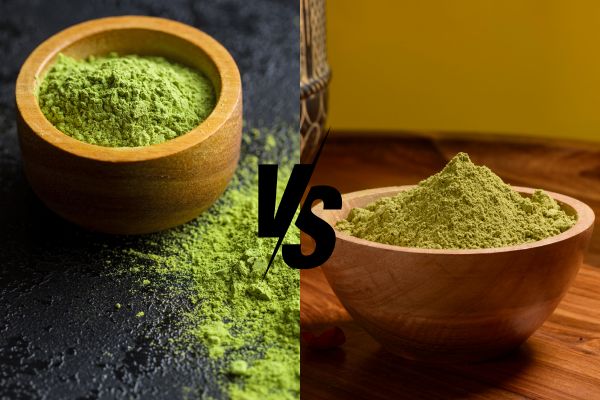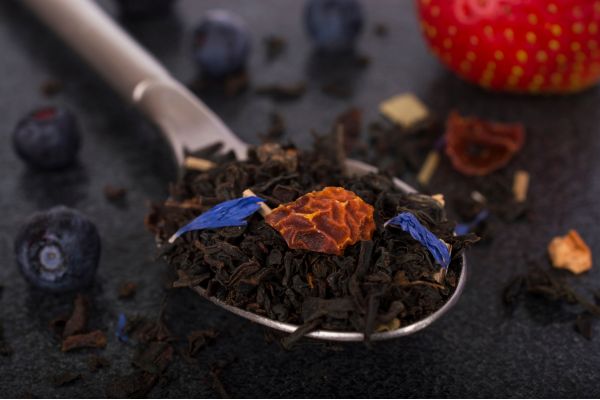Vietnamese tea culture is both sophisticated and casual. It doesn’t have numerous stringent norms like many other nations, such as Japan, China, the United Kingdom, etc.
You can see the typical feature of culture that reflects in the variety of Vietnamese teacups. The more you delve into it, the more surprising you will find that Vietnamese teacups are a unique part of the world.
This article will provide interesting information about teacups in Vietnamese culture, types, and where to buy them.
Contents
1. Teacups in Vietnamese culture
Teacup is probably a vital part of any country’s tea culture. Along with the development of Vietnamese tea culture for thousands of years, teacups have existed in various shapes and kinds.
Since ancient times, Vietnamese people liked to drink tea made from fresh tea leaves and enjoy it with a bowl. This custom is still maintained today in many Vietnamese families in the countryside.

On formal occasions or at tea ceremonies, Vietnamese people often choose ceramic or porcelain cups. The teacups regularly synchronize with the teapot and show the style and preferences of the host or tea maker.
Choosing teacups can reflect the sophistication of Vietnamese tea culture. Teacups should not be big or small so that lead drinkers can enjoy it easily. Vietnamese people use teacup upon season. In the summer, teacups should be thin and light to help the tea become cool faster, whereas teacups should be thicker to hold heat longer.

In recent years, glass teacups have become increasingly popular. You can easily see simple glass teacups being used at any tea shop on the streets of Vietnam.

There are no precise rules about cups for tea in our tea culture. Vietnamese teacups come in a wide range of styles, colors, and materials, which can be overwhelming. Let’s find out some typical teacups in the next section.
2. Types of Vietnamese teacup
Teacups in Vietnam are available in a variety of designs, materials, colors, and sizes. The cups are made from various materials, including porcelain, ceramic, glass, wood, jade, metal, plastic, and so on.
Ceramic, porcelain, and glass are the three most common types of Vietnamese teacups.
2.1 Ceramic teacup
The main material to make ceramic teacups in Vietnam is white clay, fired at a temperature of 700 – 900 degrees Celsius. Some of the high-class cups are partly glazed and fired at a higher temperature. In general, the ceramic teacup still retains its pure rustic color, earthy body, spongy and high hygroscopicity.

Most ceramic teacups come in sets with teapots. There are also cups designed with lids that can be used to brew tea instead of the pots.

Ceramic teacups retain heat relatively well and provide adequate insulation, maintaining the aroma for an extended period of time. These cups are often used for Vietnamese whole leaf teas such as green tea, flower-marinated tea, Oolong tea, herbal flower tea, etc.
2.2 Porcelain teacup
Vietnamese porcelain teacups are also made from white clay but are fully glazed, painted with beautiful patterns, and fired at high temperatures from 1200 to 1400 degrees. As a result, these cups have higher safety and are difficult to absorb water. The productivity, hardness, strength, heat resistance, heat retention ability of porcelain are all higher than ceramic teacups.

Porcelain teacups can be 2 – 6 cups that match with the teapot or a big cup with a built-in filter that can be used in place of the pot.

Porcelain cups are suitable for almost all types of tea, most commonly used are Black tea, Green tea, Vietnamese Earl grey tea, etc.
2.3 Glass teacup
Glass teacup is made from silica sand combined with some materials, fired at a temperature of more than 1000 degrees to enhance heat resistance and safety than household glass.
Compared with Vietnamese ceramic and porcelain teacups, glass teacups have poorer heat resistance and are more fragile but in return, they are transparent, suitable for teas with beautiful liquor color, brilliant appearances such as Flower tea, Fruit tea, Herbal tea, mixed tea, or iced tea cold drink.

Glass teacups are also often used in offices to infuse tea bags quickly and conveniently.
Many glass teacups are also designed with a removable filter, making it convenient to brew leafy teas.
The teacups used by Vietnamese people can be made in Vietnam or imported. There are many low-priced, mass-processed industrial products, but unique handmade teacups from traditional craft villages will have a much higher value. We will introduce you to some villages where you can order authentic Vietnamese teacups in the next part of this article.
Click here if you want to know more about: How to make Vietnamese tea – A guideline to enjoy our tea easily!
3. Where to buy the best teacup in Vietnam
Handicraft products are the strength of Vietnam. There are dozens of traditional craft villages where you can discover satisfactory teacups that still exist till nowadays. The following villages are typical of them:
3.1 Bat Trang Ceramics Village (Làng Gốm Bát Tràng)
Bat Trang Ceramics Village located in Gia Lam, Hanoi is a famous craft village tourist destination. With almost 1000 years of history, this is the most famous village in Vietnam for ceramic and porcelain products. Artworks from Bat Trang are highly appreciated for their quality and variety, circulated throughout the country and exported to many countries.
This is also the birthplace of numerous beautiful Vietnamese teapot, teacups, from common ceramic and porcelain teacups to Tu Sa clay teacups or custom-made cups at pretty high prices.

3.2 Chu Dau Pottery Village (Làng Gốm Chu Đậu)
Chu Dau Pottery Village was formed around the 14th century in Thai Tan commune, Nam Sach district, Hai Duong province. This craft village was lost in the long years of wars but was restored in 2001 and has developed brilliantly until now.

The highlight of Chu Dau pottery in general and ceramic teacups, in particular, is the white clay material taken from the Truc Thon area of Hai Duong province. The process of molding and drawing are all handmade by skillful and experienced craftsmen. Moreover, the pattern is drawn according to the method of painting under the enamel and the lines are imbued with Vietnamese culture.

3.3 Lai Thieu Pottery Village (Làng Gốm Lái Thiêu)
Lai Thieu Pottery Village was established in Thuan An Town, Binh Duong province in the 19th century, taking advantage of the abundant white clay and firewood materials at the site. This is the most famous pottery village in Southern Vietnam.

Lai Thieu Pottery Village created featured eel-skin yellow teacups or porcelain teacups with bold Southern patterns.

3.4 Gia Thuy Ceramic Village (Làng Gốm Gia Thủy)
Gia Thuy Ceramic Village in Ninh Binh’s Nho Quan district is a relatively new craft village, established for roughly 50 years but has developed strongly recently.
There is a yellow clay material source in Gia Thuy that is very suitable for creating beautiful durable ceramic products.

Teacups from Gia Thuy Ceramic Village are usually thick and have a characteristic glossy, iridescent golden brown color.
3.5 Xoi Tri Glass Village (Làng thủy tinh Xối Trì)
Glass blowing used to be a popular profession in Xoi Tri village, Nam Dinh province since the subsidy period. This place still maintains the traditional way of making thick, faceted glass cups, which are used a lot at common tea shops and beer shops throughout the streets of Vietnam.

Although the market is becoming increasingly flooded with modern and beautiful glass teacups, if you want to buy glass cups that are familiar and associated with generations of Vietnamese people, as well as imbued with the culture of roadside iced tea, Xoi Tri Glass Village is the place you need to find.

In addition, there are many other pottery villages in Vietnam where you can order ceramic and porcelain teacup products such as:
- Tho Ha Pottery Village in Bac Giang province
- Phu Lang Pottery Village in Bac Ninh province
- Bach Lien Pottery Village in Ninh Binh province
- Bien Hoa Pottery Village in Dong Nai province
- Khmer Pottery Village in An Giang province
- Etc.
Most of the above villages still keep the traditional manual production method but also gradually invest in modern machinery to be suitable for mass production, serving export needs and creating novel teacups to catch up with the market trends.
Related post: Do Vietnamese people drink tea? A glimpse of Vietnamese tea drinking habit
A good cup can help perfect your drink. Teacups are not merely a cup but can also be valuable spiritual gifts. Hopefully, this article has partly explained why Vietnamese teacups are such a unique part of the world.
If you want to buy Vietnamese tea to synchronize with those teacups, please contact us at info@vietnam-tea.com
Author: Ms. Hang Gina – FGC Sales Executive










